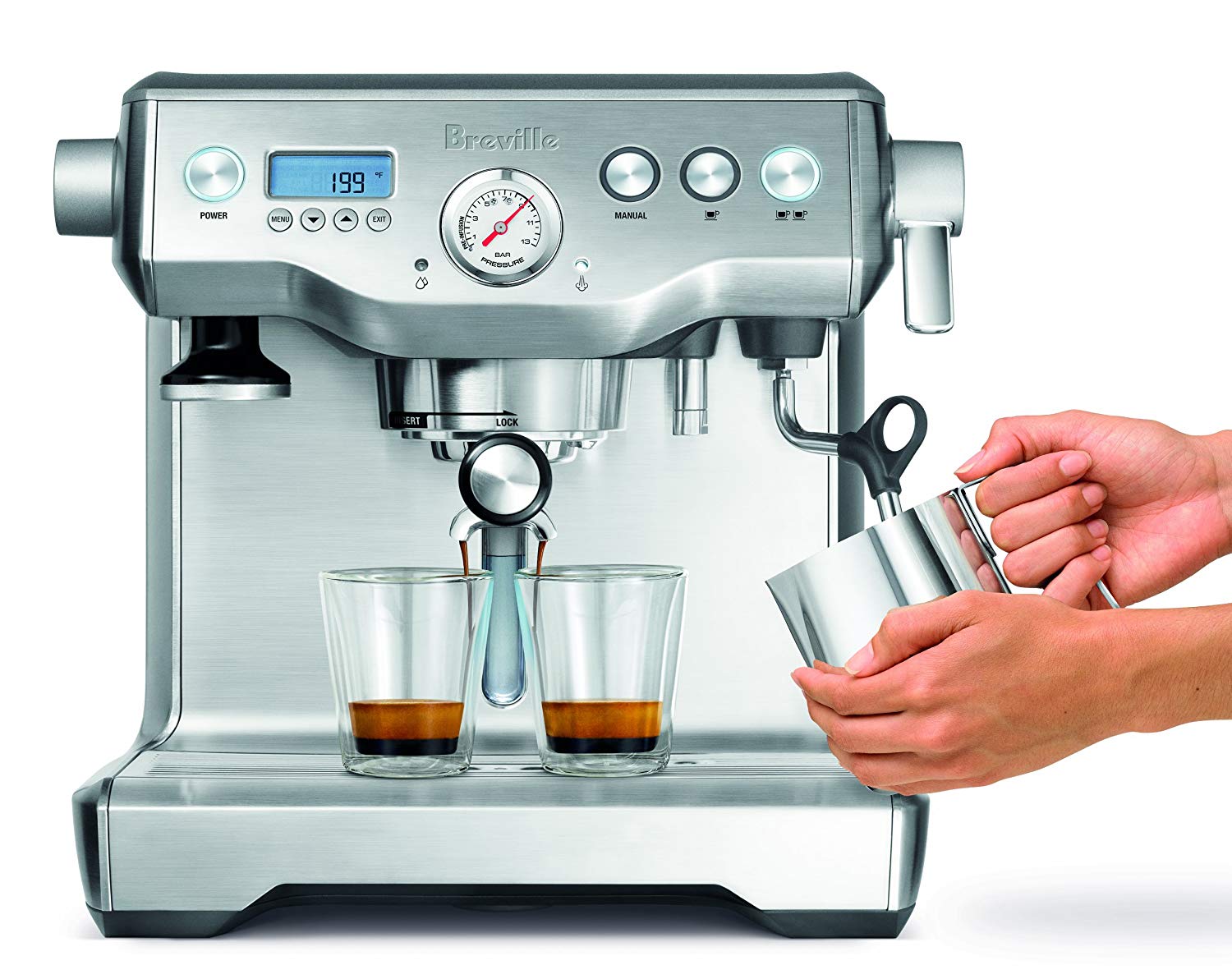

In that case, you should consider a model that automatically stops brewing at the right time. You know, receiving orders and money, grinding, tamping, and steaming all that. It’s a decent compromise.īut let’s say you’re planning to be working at the café by yourself, and that you’re not that good at multitasking. The downside is that it’s physically draining to pull a lever many times every day.Ī semi gives you some control and saves you some work. It also looks pretty damn cool on those Instagram photos, which will be an essential part of your marketing. That means you should go with the lever as that offers maximum control over extraction. If you are serious about your barista craft, you want to be able to customize the shot down to every little detail.
Automatic espresso machines commercial manual#
Automatic espresso machines commercial professional#
Well, the professional models also have exciting features, but usually, they are only secondary to the really big questions – like whether your model should be: When we talk about home espresso machines, we frequently speak about fancy features. Features in a commercial espresso machine? “I’ve seen a few cafés where they have an eight-group machine in place – something I’ve thought of as the monster-truck of our industry – but at peak times it still hard to get more than two people on that machine, and the amount of groups is rarely the limiting factor in a café’s production,” he writes in the book. Unless you’re extremely busy two groups will probably suffice. “In my experience, the capacity of a two group machine in an eight-hour day is around 1,000 drinks with two baristas at a time (allowing for a third person relieving them for breaks) which equates to about 125 drinks an hour, or just shy of 20kg a day for those that are inclined to measure that way.”Īccording to Harmon, it’s hard to fit more than two baristas no matter how many groups you have. In his book “ What I know about running coffee shops” (which I recommend highly) he explains that a two-group machine can handle up to 125 drinks per hour and more often than not it’s just as good as a three-group: Capacity of two groupsĪccording to the Irish coffee guru and coffee shop owner Colin Harmon, more often than not, it’s the workflow and not the equipment that’s slowing you down. One of the things that can bog down the whole process is if baristas have to wait for their turn. If you’re planning to run a larger café with more baristas working at the same time, you’ll probably want to consider a device with two brew heads. It’s not that you can’t pull a great shot on that beautiful Rocket Giotto, it’s just that it’s made for a maximum of 15 shots per hour and not 100. The truth is, there’s a good reason we generally divide espresso machines into amateur and professional. The key takeaway here is that you shouldn’t focus on your customer volume per day but rather during peak hours. So will you let them wait? If that’s the case, they might not be your customers for long. Most likely you’ll have a massive influx of customers between 8 and 9 in the morning. You need to treat is like a simple math question The first thing you need is this: How many customers do you have in your busiest hour? And how many shots can your machine and grinder produce?

In this article, we will explore the primary considerations if you want to run a thriving espresso bar. So you need to start thinking like a professional. The demands of a coffee shop and of a home setting are just too different. If you anticipate anything beyond a minimal customer base, relying on a home-use espresso machine – even a high-end dual boiler – will eventually become a headache. The answer is almost always, ‘it depends, but probably not.’ A typical question from people who want to open a small coffee shop is whether a particular espresso machine would work out in a commercial setting.


 0 kommentar(er)
0 kommentar(er)
